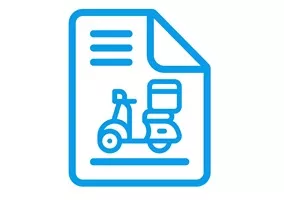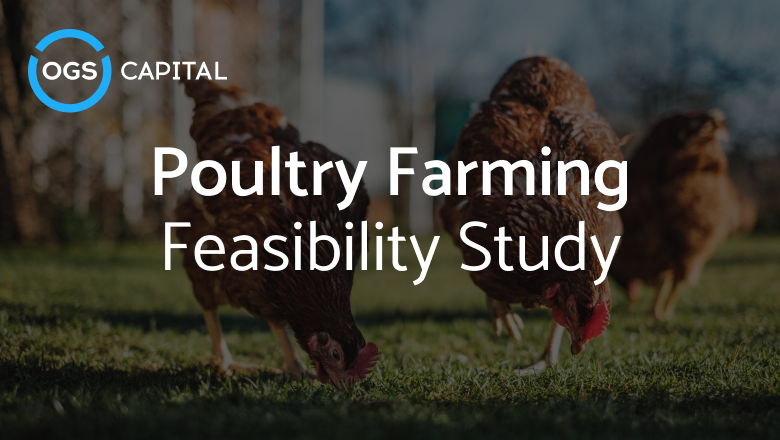Table of Content
Poultry farming is when you keep and grow birds like chickens, turkeys, ducks, and geese for different things, like meat, feathers, and eggs. Many people want poultry products, so it can be a good business. But before you start a poultry farming business, you need to study and plan well, and a feasibility study can help you see if it can work and make money.
Why should a feasibility study be carried out at the beginning of a poultry project?
You need a feasibility study for any business, especially for poultry farming that can change a lot. Feasibility study tells you how well the project can do, what are the pros and cons, what are the risks and opportunities, how much money it can earn and where is the best spot for the project. A good feasibility study can help you learn a lot to make smart choices, earn more money, and not lose money.
For example, a potential poultry farmer planning to start a project without conducting a Poultry Farming Business Plan Sample and Feasibility Study may be at risk of not understanding the market demand, competition, or regulatory requirements in their locality. Without such significant insights, the farmer risks facing financial loss from the onset of the project due to lack of planning, and it could lead to long-term failure of the project.
After doing a feasibility study, the poultry farmer learns important things. They find out what the market wants, how many other farmers are competing, how much money they need, and what the business situation is like. Also, they can see if the business will make enough money and then decide what to do next to make the most profit.
https://www.youtube.com/watch?v=U8y67PefifM
When planning to start a new poultry project, the farmer may face a situation where they don’t conduct a feasibility study or don’t carry it out thoroughly. This can have several possible consequences:
1. Inability to identify potential risks and opportunities: Without conducting a feasibility study or a Eggs Farming Business Plan Sample, farmers may not be able to identify potential risks and opportunities, which could lead to financial loss or missed opportunities.
2. Misjudging the financial viability: In the absence of a feasibility study or a Pig Farm Business Plan Template, farmers may not be able to assess the financial feasibility of the poultry project. They may overestimate the potential profitability of the project, overlook significant costs or improperly allocate resources leading to financial loss.
3. Choosing the wrong location: A successful poultry venture or Dairy Farm Business Plan Template is highly dependent on its placement. If an assessment of feasibility is not executed, poultry producers may neglect to appraise the influence of different locations on the feasibility of the enterprise. They may choose a place that does not have the things they need to run the business well.
It’s really important to do a feasibility analysis before starting a poultry farm. If you skip this, you might start a business that doesn’t make enough money, has problems running, and doesn’t make a profit.
What does a feasibility study of poultry farming include?
A feasibility study for poultry farming samples helps you learn how to start and run a good poultry farming business. Usually, such a study has three main parts:
1. Market and Need Analysis
The market and need analysis is to find out who will buy your poultry products and how much they want them. You need to know the current market trends and customer habits when you think about a poultry farming business. A few of the elements to encompass in this section are:
- Market size and growth potential
- Target market segments and their preferences
- Current and forecasted demand for poultry products
- Availability of raw materials and inputs (feed, water, etc.)
- Competitors and their market share
- Pricing strategies and market trends
- Infrastructure requirements (land, buildings, equipment, utilities)
Examples of items to be included in the Market and Need Analysis:
- Analysis of poultry products’ market trends over the past 5 years.
- Research on consumer behavior and preferences of different poultry products.
- Evaluation of potential new markets for poultry products, such as export opportunities or new domestic markets.
- Analysis of competitors’ market share and the pricing strategies they use.
2. Process Analysis
The process analysis looks at how the poultry farm works, like how things are produced, how the farming is done, and the rules for operations. The aim is to check if the farming process is doable and can keep going. Some things to think about in this part are:
- The size and type of farm needed to meet demand
- The type of poultry to be raised and the breeding method
- Feed and fertilization methods
- Disease management and biosecurity measures
- Waste management practices
Examples of items to be included in the Process Analysis:
- Assessment of the land and facilities required to start the poultry farm.
- Selection of the most profitable poultry breed to meet the target market’s demand.
- Determination of the feed and fertilization process for the poultry farm.
- Development of a disease management plan and implementation of biosecurity measures.
- Evaluation of the best methods for disposing of waste by-products from the farm.

3. Financial Analysis
The money check looks at how much is invested and earned in the poultry farm. This means really looking at costs, money coming in, and how much profit is made. The money check should think about different situations to see if the project is smart by figuring out the money risks and possible profits. Some things to put in this part are:
- Start-up costs and ongoing expenses
- Revenue projections and profit margins
- Break Even analysis and return on investment
- Risks and mitigation strategies
Examples of items to be included in the Financial Analysis:
- Calculation of the total start-up costs, such as land purchase, building construction, and equipment expenses needed to launch the poultry farm.
- Estimation of the ongoing expenses, such as feed and maintenance costs, needed for the farm to operate efficiently.
- Financial projections of expected revenue from the poultry farm, such as egg or meat sales, for the next five years.
- Break Even analysis to determine the point at which the business will start making a profit.
- Figuring out the possible problems the business might have and how to deal with them.
Relationship to current investor interests
For people who want to start or grow a business, it’s really important to do a feasibility study before putting money into it. This helps figure out if the business fits with what they already have and want, and also finds any problems or chances. Different investors might see the same business differently, based on what they already have and want.
Let’s understand this with a hypothetical scenario of Investor A and Investor B that illustrates how different investors may have different interests and perspectives on the same project, depending on their current portfolio and goals.
Investor A owns or is aligned to a chain of supermarkets.
Investor A wants the egg production project to vertically integrate with his existing business. This means he wants to control the entire supply chain of eggs from production to distribution to retail. He knows he can sell the eggs because he owns the shelf space in his supermarkets. He may conduct a feasibility study that focuses on how the project links with his overall structure and market strategy.
Investor B grows corn and has a feed mill that is operating at 50 percent capacity.
Investor B is interested in synergies with his grain business. This means he wants to use his excess corn and feed mill capacity to produce feed for the egg production project. He may conduct a feasibility study that focuses on how the project reduces his costs and increases his utilization rate. For example, he may consider how the project will lower his feed prices and improve his feed quality, how it will increase his demand and revenue for corn and feed mill products, how it will optimize his production and operation efficiency, etc.
In such a case, each investor will get a different answer from a feasibility study based on their own criteria and assumptions. They will weigh the costs and benefits of the project differently according to their own interests and perspectives.
This table will help you understand what role will feasibility study play for Investor A and Investor B.
| Role of feasibility study | Investor A | Investor B |
| Assess the viability and profitability of the project | As part of his vertical integration strategy | As part of his synergy strategy |
| Identify the best location, size and design of the facility or process | Of the egg production facility | Of the feed formulation and production process |
| Estimate the capital and operating costs and revenues of the project | Of the egg production project | Of using his excess corn and feed mill capacity for the project |
| Analyze the market demand and supply and the competitive landscape | For eggs | For corn and feed mill products |
| Evaluate the risks and opportunities of the project in relation to his existing business | Suppliers and customers | Grain business |
| Develop a plan for the project | Business plan and marketing plan | Production plan and operation plan |
Feasibility studies are like fingerprints – each one’s special. So, before putting money in, investors should do their own big check. This way, they can predict problems and money down the drain by looking at what’s good and tough about the project. These studies are super crucial. They stop investors from losing lots of money and stressing later on. Basically, they’re a huge deal when starting or growing a project.
OGSCapital – Your trusted partner for Comprehensive Feasibility Study Reports
OGSCapital has experts who make high-quality feasibility studies, business plans, private placement memorandum, pitch decks, confidential information memorandum, and more for all sizes of businesses. With years of experience, we give complete insights and ideas to help businesses make informed decisions.
OGSCapital makes special research reports for many kinds of companies. These one-of-a-kind reports help companies see possible troubles, chances to earn profit, and if a new biz idea will fly.
Our experts work real close with each company to be sure the report matches their aims. We dig deep to give the whole scoop on what’s buzzin’ in the market, what buyers crave, and who the competition is.
Our super thorough research on launchin’ a Feasibility Study on Poultry Farming PDF helps fledgling companies in big ways. It helps them snag investors and score dough. It also helps them make the max bucks possible.
Contact us today to learn more about our services and how we can help you achieve your business goals.
FAQ
- Q. Which poultry farming is most profitable?
Broiler farming is considered the most profitable type of poultry farming due to the high demand for chicken meat. However, before starting any poultry farming venture, it’s crucial to conduct a feasibility study on poultry farming for beginners. - Q. What is the vision of poultry farming?
The big dream for chicken farming is to keep supplying meat and eggs for people to eat in a way that’s steady and doesn’t hurt the planet. And to treat the chickens right while doing it.
OGSCapital’s team has assisted thousands of entrepreneurs with top-rated document, consultancy and analysis. They’ve helped thousands of SME owners secure more than $1.5 billion in funding, and they can do the same for you.













